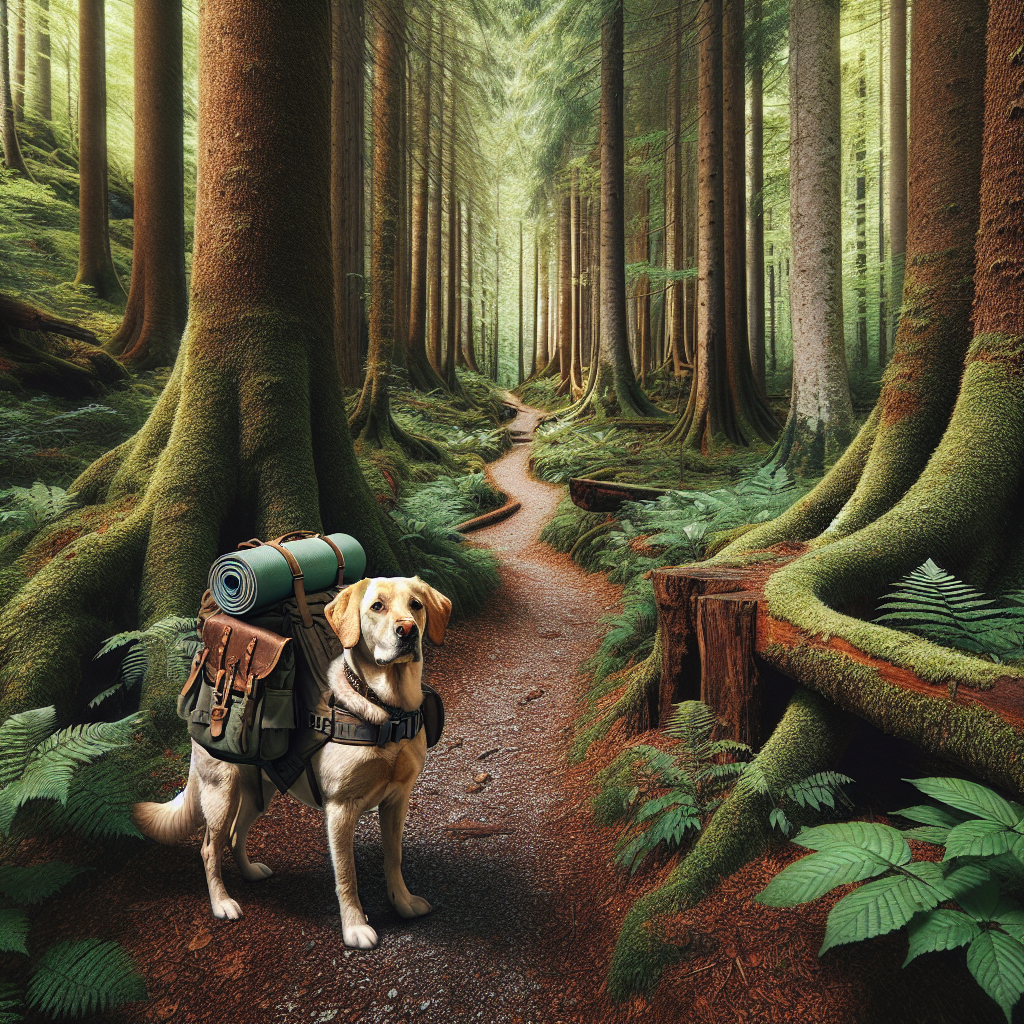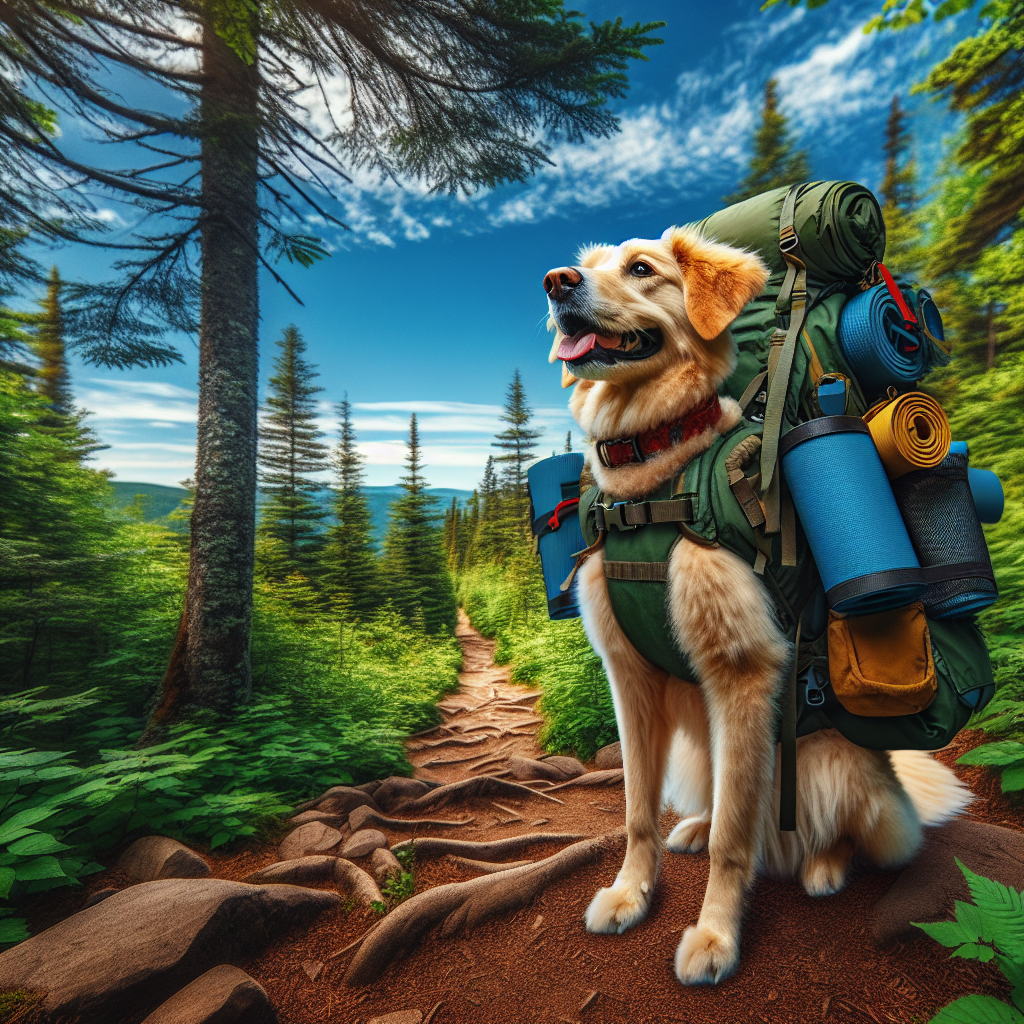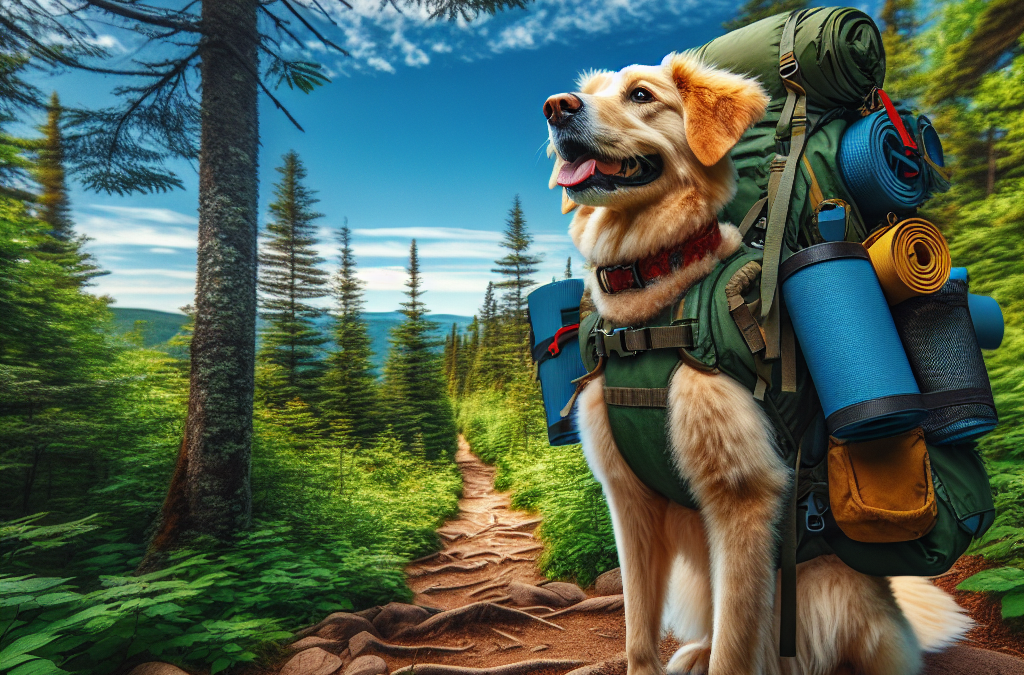Embark on an extraordinary journey in the company of your four-legged friends with “The Ultimate Guide To Camping And Hiking With Dogs”. As a cherished member of our growing tribe at TrailTrekTribe.com, you are cordially invited to immerse yourself in the vast expanse of the great outdoors, and there’s no better companion than your beloved canine. This detailed guide crafted by the knowledgeable team and our thriving community of outdoor zealots offers invaluable advice and practical insights to amplify your camping and hiking experience with your dogs. Packing lists, training tips, safety measures, and choosing dog-friendly trails – discover it all and more. Let’s make every adventure memorable, safe, and fun for you and your loyal companions!
Understanding Your Dog’s Aptitude For Outdoor Activities
Before you start packing your bag for a camping or hiking trip with your dog, it’s important to understand your furry friend’s aptitude for outdoor activities. Not all dogs are built for long treks or extended periods in the wilderness. Understanding your dog’s abilities and limitations will not only keep them safe but will also make your adventures more enjoyable.
Knowing Your Dog’s Breed
Knowing your dog’s breed can give you valuable insights into their capabilities. For instance, certain breeds like Labrador Retrievers and Border Collies have high energy levels and are known for their outdoor prowess. On the other hand, breeds such as Bulldogs or Pugs may struggle with strenuous activities due to their brachycephalic (short-nosed) nature.
Determine Your Dog’s Fitness Level
Just like humans, dogs need to be in good physical shape to handle the rigors of hiking or camping. Regular check-ups with a vet can help determine your dog’s fitness level. It’s also recommended to slowly introduce your dog to more physically demanding activities. If your dog is generally inactive, start with short, easy walks and gradually increase the duration and intensity.
Consider Your Dog’s Age and Health
Age and health are also critical factors. Puppies and older dogs may not have the stamina for strenuous hiking. Also, dogs with certain health conditions might find the exertion and outdoor conditions challenging. Always consult with your vet before planning outdoor adventures with your dog.
Preparing Your Dog For Camping and Hiking
Once you’ve assessed your dog’s aptitude for outdoor adventures, it’s time for the preparation phase. Your dog needs to be physically and mentally prepared to handle the challenges that come with camping and hiking.
Implement a Regular Exercise Routine
Exercising regularly is vital. Regular walks, jogs or play sessions can help improve your dog’s stamina and physical resilience, making them better equipped to handle more demanding outdoor activities.
Expose Your Dog to Different Environments
Exposing your dog to different environments in a controlled manner will help them acclimate to new experiences. Start with local parks or trails and gradually expose them to new terrains and environments. This gradual exposure can help reduce anxiety during your outdoor adventures.
Teach Basic Obedience Commands
Ensuring your dog understands basic obedience commands is crucial for their safety. Training your dog to respond to commands like sit, stay, come, and leave it, can help prevent accidents and ensure your pet’s safety during your outings.

Choosing Dog-friendly Camping and Hiking Sites
The location of your outdoor adventure plays a significant role in your dog’s experience. Opting for dog-friendly sites will make your trip more enjoyable and less stressful.
Recognizing Pet-friendly Parks
Researching your chosen location thoroughly is essential. Ensure that the area allows dogs and is safe for them. Pet-friendly parks often have designated dog-friendly trails and campsites.
Understanding Campground and Trail Rules
Understanding the rules and regulations pertaining to dogs at your chosen site is vital for a stress-free trip. Rules might include leash laws, waste pickup, prohibited areas, and breed or size restrictions.
Avoiding Trails with Potential Hazards for Dogs
Avoid trails that pose potential hazards for dogs such as extreme weather conditions, unsafe terrain, or wildlife threats. Always prioritize the safety and comfort of your dog during your treks.
Packing the Right Gear For Your Dog
Just like you, your dog will need proper gear for the trip. Ensuring your pet is properly equipped will not only provide comfort but also ensure safety.
Opting For the Right Dog Backpack
A dog backpack can be a useful tool for your pet to carry some of their supplies. When choosing a backpack, consider its size, comfort, and adjustability to suit your dog’s size and strength.
Choosing a Comfortable Dog Harness
When hiking or camping, a comfortable and sturdy harness can provide improved control, without putting strain on your dog’s neck or back. Ensure the harness fits well and does not cause any discomfort.
Understanding the Importance of a Leash
A leash is not just a tool for control. It can protect your dog from wandering into hazardous areas or chasing wildlife. A sturdy, reflective leash will help others spot your dog, particularly if you’re out in the early morning or late at night.
Packing Proper Dog Food and Water Supplies
Remember to pack enough food and water for your dog for the duration of the trip. Always carry extra in case your getaway is prolonged due to unforeseen circumstances. Consider collapsible bowls to save space.

Keeping Your Dog Safe and Healthy on The Trail
Your dog’s safety and health should be your top priority during your adventure. Learning to recognize signs of distress and carrying essential supplies can go a long way in ensuring this.
Recognizing Signs of Exhaustion or Distress
Typical signs of distress in dogs include heavy panting, drooling, confusion, and loss of appetite. If you notice these signs, take breaks, offer water, and if necessary, find a shaded area to let them rest.
Carry a Dog First Aid Kit
Carrying a dog-friendly first aid kit is essential. This kit should include bandages, tick removal tools, antiseptic wipes, a pet first aid book, and any medications your dog might need.
Tips for Keeping Your Dog Hydrated
Ensuring your dog stays hydrated during the trip is crucial. Have water readily accessible for your dog and encourage them to drink regularly. Avoid letting your dog drink from standing water sources, which could contain harmful bacteria.
Camping With Dogs: Tips and Tricks
Camping with dogs can be a wonderful experience if planned correctly. Here are a few tips to help you create a comfortable and safe camping environment for your dog.
Setting Up a Dog-friendly Campsite
Select a campsite with shade to protect your dog from the heat and sun. Ensure there’s enough space for your dog to move around without wandering too far. Keep your dog’s sleeping area warm and dry by using a dog-specific sleeping bag or an insulated pad.
Using tie-outs or Leashes at the Campsite
When at the campsite, using a tie-out or a leash can keep your dog secure and prevent them from chasing wildlife or getting lost. Choose a tie-out that’s strong enough to hold your dog and long enough to let them move freely within a defined area.
Fire Safety for Dogs
Fire safety is crucial while camping. Keep your dog secure and away from the campfire. Never leave them unattended near the fire. At night, make sure the fire is completely extinguished before retiring to your tents.
Hiking With Dogs: Tips and Tricks
Hiking with your dog can be a thrilling experience. Here are some pointers to ensure a safe and enjoyable trek for both you and your dog.
Getting Your Dog Used to Walking on Uneven Terrain
Prioritize getting your dog comfortable with walking on various terrains before attempting a hike. Start with smaller, local trails and observe how your dog manages. Over time, they’ll adapt and become more comfortable with different surfaces and slopes.
Dealing With Wildlife Encounters
Train your dog to stay calm and to follow commands in case of wildlife encounters. Opt for a sturdy, dependable leash to help maintain control during unexpected encounters.
How to Handle Meeting Other Hikers
Training your dog to stay calm around strangers is crucial. Always maintain control of your dog when other hikers, particularly those with children or pets, are nearby. Your hike will be much more enjoyable if your dog is well-mannered.
Practicing Leave No Trace Ethics
As outdoor enthusiasts, we have a responsibility to protect our environment. This principle is referred to as Leave No Trace, and it applies to our furry friends too.
Understanding Leave No Trace Principles
The Leave No Trace principle is based on respecting the natural environment and minimizing human impacts on it. You and your dog should leave the trail or campsite as if you were never there.
Cleaning Up After Your Dog
Always clean up after your dog. Stock up on waste bags and carry them with you during your hikes. Some parks have specific waste disposal rules for pets, so familiarize yourself with these before visiting.
Respecting Wildlife and Other Outdoor Enthusiasts
Train your dog not to chase or disturb wildlife. Also, respect other visitors and ensure your dog doesn’t cause any disruptions.
Dealing With Common Dog-related Issues on The Trail
Outdoors, different challenges can arise. Knowing how to handle dog-related issues can ensure a safer and more enjoyable experience.
Handling Barking or Aggression
If your dog becomes agitated or starts barking excessively, leash them and move them away from the trigger. Teaching your dog to be calm and obedient can help reduce such instances.
Addressing Fear or Anxiety
If your dog displays signs of fear or anxiety, find a quiet place for them to rest and reassure them with soothing tones and gentle cuddles. Using toys or treats can also help distract them.
What to do if Your Dog Gets Lost
In case your dog gets lost, having a plan can markedly reduce panic. Use recent photos for flyers and posts on local social media groups. Notifying local animal shelters, ranger stations and veterinary clinics can also help.
Post-adventure Care For Your Dog
After your adventure, sufficient rest and care are required for your dog to recover and prepare for potential future trips.
Checking Your Dog for Ticks and Injuries
Perform a thorough check for ticks, injuries or abnormalities after your adventure. Remove any ticks carefully and make a note of any injuries to mention at your next vet visit.
Providing Proper Recovery Time
Ensure your dog gets ample rest after your trip. Watch them for signs of fatigue or illness, and if noticed, provide proper care or visit your vet.
Recognizing Signs of Post-adventure Fatigue or Illness
Signs of post-adventure fatigue or illness can include continued lethargy, lack of appetite, limping, or abnormal behaviour. Recognizing and addressing any issues promptly will enable your dog to recover soon and get ready for new adventures.
Embarking on outdoor adventures with your dog can be a rewarding experience. By taking the necessary precautions, understanding your dog’s capabilities, and providing proper care and training, you’ll be prepared to tackle the wilderness together. Happy trails!

